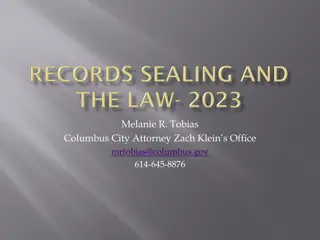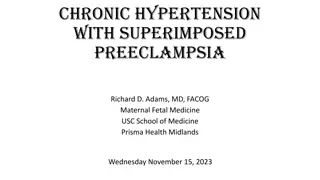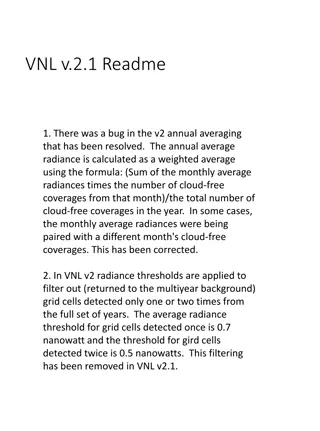Understanding Masking and Partial Loudness in Sound Perception
Masking in sound perception involves the phenomenon where changes in total loudness do not occur despite adding or removing signals, due to partial loudness variations across frequencies. This concept is crucial for comprehending how we perceive sound and the limitations of our auditory system, particularly in relation to the cochlea and inner hair cells. Through this exploration, we delve into the intricacies of sound masking and partial loudness analysis in the context of sensory perception.
Download Presentation

Please find below an Image/Link to download the presentation.
The content on the website is provided AS IS for your information and personal use only. It may not be sold, licensed, or shared on other websites without obtaining consent from the author. Download presentation by click this link. If you encounter any issues during the download, it is possible that the publisher has removed the file from their server.
E N D
Presentation Transcript
BEFORE WE START PLEASE GO TO https://we.tl/t-VwIbzGCh94 AND PICK UP THE ZIP FILE. Unpack it. This will give you a set of files that I intend to demonstrate masking with. These can not be made into .mp3 or other encoded formats without risking loss of the intended masking phenomena. Please listen in headphones. Use the file named nbnoise.wav to set a comfortable, not excessive listening level.
Whats this about masking James D. (jj) Johnston Chief Scientist, Immersion Networks Redmond, Wa
Please note: The meeting notice suggested that you might want to go back and review the talk about Hearing 096 first. This really isn t optional, the frequency analysis that occurs on the cochlea is key to understanding masking. If you haven t, remember that the ear is a kind of time/frequency analyzer. This is a key point.
What is masking? In order to get there, we must carefully define loudness, and the term partial loudness Loudness is expressed in sensory terms. Intensity (spl, etc) is not Loudness. There are multiple talks on loudness, as well, at the meeting recap site.
Partial Loudness Loudness refers to the sensory level across all frequencies. Partial loudness refers to a vector of contributions to the total loudness across frequency. It is a function of both time and frequency, and is generally approximated in 1/3 ERB (see the hearing talk for the definition of an ERB) steps across frequency, for any given time instant.
Some things to remember First, an ERB is effectively the bandwidth of a filter. The signal it filters excites a particular region of the cochlea. The inner hair cell on the cochlea is the detector that excites (among other things) the auditory nerve. The SNR of the inner hair cell is about 30dB. This 30dB range gets mapped across 90+dB via cochlear mechanics and the outer hair cells. This 30dB number is strongly related to masking issues.
Now, imagine we have a measurement of partial loudness over a time interval. MASKING occurs when the partial and total loudnesses DO NOT CHANGE when things are added to, or removed from, the original signal. In short, it is a loudness (and partial loudness) change of ZERO for some amount of signal change. The SNR of the inner hair cell is one limit. There are others.
Please listen to these files from the downloaded zip archive now: nbnoise.wav Vs. nbnoisesin.wav Vs. nbnoisesins.wav Please listen to these three, in headphones, without changing your listening level. Use the first file to set a reasonable level. Compare nbnoise.wav and nbnoisesin.wav Then compare nbnoise.wav to nbnoisesins.wav
The Power Spectra nbnoise nbnoisesin nbnoisesins Full size jpg s will be on the site.
So, what did you hear? Nbnoise vs nbnoise+sin Most likely nothing at all. This exhibits masking. Nbnoise vs. nbnoise+sin2 Come on, anyone could hear that! That s not masked, for sure. The masker is narrow band noise in one ERB around500 H.z There is a sine wave in both examples, just at different frequencies. The two sine waves have the same level. The level of the noise and sine are unchanged, only the frequency of the sine wave is varied. This is a very important point, masking happens primarily inside one ERB. The first example puts the tone in the middle of the ERB constituting the narrowband noise. The second puts the tone an octave lower.
So, whats the point? Well, that s two signals of identical SNR One masks the sine wave completely The other one doesn t even come close This, in addition to demonstrating masking, makes it perfectly clear that masking is frequency dependent.
Masking principle 1: Masking is frequency based. Frequencies near each other in an ERB scale interact. But there s more. Masking spreads UPWARD in frequency. There is some masking up to 2-3 ERB s above the masking signal. Not much, but enough to be important for perceptual coders. Masking does NOT spread downward to any substantial extent. Once you get a half ERB below the masker, masking is mostly gone. Hence the difference in the two files with a sine wave added.
Which means, of course If two signals have substantially different frequency spectra They won t mask each other unless the level difference is enormous. BUT this does not mean two signals with similar spectra will interact and have some parts masked. Second principle of masking: There is simultaneous masking (both signals present at the same time), which is the strongest case. There is postmasking, where the masker comes first, followed by the masked signal. This is a much smaller effect, and often tricky to take advantage of. There is premasking, where the masker comes after the masked signal. For all useful purposes, this does not exist. This is where the dread pre-echo comes from.
So, now, the first two rules of masking To interact and have masking, you must have similar spectra from the two signals. There must be enough level difference to provide masking. The two signals must be closely time aligned. WAIT, the first THREE rule of masking are
So, then, 30 dB down inside an ERB, with no pre- echo, in simultaneous situations and you re good? Well, maybe, but you often need much less than 30dB. The next demo: Tmn.wav Nmt.wav Again, use headphones. The first file is a tone (sine wave) masking noise. The noise level is 15dB. The second one is noise masking tone, same difference. Note nmt.wav is the same file as nbnoisesin.wav You can use nbnoise.wav to compare. The noise in the tone masking noise file is kind of obvious by itself.
The spectra Noise masking tone Tone (not) masking noise
Masking signal characteristics There are some classical results we can mention: Tone Masking noise, noise contained within +- ERB of the tone. 30dB SNR suffices. Noise masking tone, same rules for bandwidth. 5.5 to 7.5 dB SNR Noise masking noise, same rules, two different noise sources Again 5.5 dB, give or take Noise masking noise, signal noise source. (i.e. gain change) 3.5 dB SNR or so (i.e. the difference level is the error )
Right, so noise is simple, tones are simple, right? Well, no, human speech comes in somewhere in the middle, as do many instruments and most everything else. The real definition of Tone means that the signal envelope within the ERB is constant The real definition of noise means that the signal envelope within the ERB varies substantially (remembering WITHIN THE ERB) So, no, it s not so simple, and this is way, way far way from a 1 hour talk. Not going there today. Obviously if you re trying to find out if one of your vocals is going to be masked, you re not going to calculate this, so use 15dB, give or take, for a decent guess.
So the four rules of masking: To interact and have masking, you must have similar spectra from the two signals There must be enough level difference The two signals must be closely time aligned The time domain structure of the signal inside each ERB matters a great deal. Approximations are required Wait, the FIVE rules of masking are (see above) And then there s stereo unmasking.
Stereo? What? So far we ve talked about a monophonic signal. Now, we ll talk about a stereo signal. This is, in fact, the origin of a great deal of the Suzanne Vega Problem . If signal and noise are in phase in the two channels, this devolves to the monophonic situation. Of course, then there s the case where the signal does not fit that description.
The Suzanne Vega Problem There are two parts. The simple one is that it is simply a demanding signal, and requires lots of bits per channel The other problem, when put through two independent codecs, is that the signal is almost monophonic, but the CODEC NOISE is independent in the two channels. Which brings us to the issue of Binaural Masking Level Depression , which is to say that the ear, especially below 1000Hz, is sensitive to differences in the waveform. This also means that the ear is sensitive to the ENVELOPE shape above 2kHz Between those two frequencies, it s a bit of one, a bit of the other, and often less sensitive.
Wait, what is this Binaural thing, now? As I said in the last slide, when you have a signal in two ears, there are several issues. The first is that differences in arrival time or wave shape at low frequencies can lead to imaging effect. This is used in stereo all the time, of course The problem arises when two signals are moved spatially in a way that UNMASKS one that, perhaps, you would prefer was masked. This can also unhide an instrument you want to hear. The second is that the same effect happens at higher frequencies, but responding primarily to the onset of the envelope of the waveform.
Wait? What? What does that even mean. Now there are two more wave files to listen to. These are identical, I think, to the ones in the AES codec listening disc, because they came from me. Listen to inphase.wav Listen to outphase.wav They don t sound the same, do they?
So, then, whats going on? In both signals, the masker is a noise masker. It is the same in both cases, the same exact values. In inphase the masked signal is a sine wave, IN PHASE in the two channels. In outphase the not-so-masked signal is the same sine wave, but inverted in one channel. The power spectrum of the two files is identical. In the first case, the sine wave is undetectable if you compare it to the noise alone In the second case, it s nothing like undetectable, but it doesn t sound much like a sine wave, either. There is BMLD in a nutshell. For more words, look in Brian Moore s book on hearing.
Left and right spectra inphase
Left and Right Spectra Outphase Yes, the power spectra are identical to arithmetic error level
All those hard to see and read plots Will be on the meeting recap page along with the .pptx deck. There, they ll be in 4k glory, and you will be able to read them
The effects of BMLD BMLD can move a signal that is indetectable at 6dB SNR (while in phase in both channels and a common masker) to detectable at close to 30dB when the masked signal is NOT in phase in the two channels. You will most often hear this only in a very dry room, or in headphones, and it s much easier to hear in headphones.
So, finally, the five rules of masking: To interact and have masking, you must have similar spectra from the two signals There must be a level difference The two signals must be closely time aligned. The structure of the signal inside each ERB matters a great deal. Approximations are required You have to pay attention to both masker and masked signal phase in stereo. Either being out of phase interaurally leads to detectable imaging issues, SOMETIMES. Of course, it s envelope match at high frequencies. And of course, the SIXTH rule of masking: If any ERB isn t masked, the signal isn t masked.
Some practical takeaway idea Similar spectra may mask or be masked Similar time domain behavior in an ERB (or multiple ERB s) may be masked Different time structure in two signals may prevent masking. Even a hint from one or 2 ERB s in time structure can cause effects similar to BMLD That s beyond the bounds of a basic tutorial.























